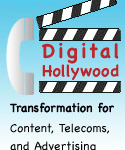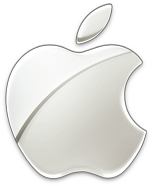Mobile Video: A Perfect Storm for User-Generated Content?
 At Digital Hollywood Chicago, mobile was constantly heralded as the emerging “third screen” because it would enable content consumption regardless of time or place, and most speakers posited that video would grow significantly as a portion of all content. However, there is little video content available for mobile viewing, so why should consumers get excited about it? Will mobile shine as the most personal view into the consumer, or will it turn out to be the third wheel? At Digital Hollywood Chicago, mobile was constantly heralded as the emerging “third screen” because it would enable content consumption regardless of time or place, and most speakers posited that video would grow significantly as a portion of all content. However, there is little video content available for mobile viewing, so why should consumers get excited about it? Will mobile shine as the most personal view into the consumer, or will it turn out to be the third wheel?
All mobile value chain players are frenetically trying to build a new digital world around the mobile device, and this world will be comprised of the familiar triad: devices, networks and content, much of which will be video. Currently, video is the highest value content medium. This session examined the current stage of development to technology and business models.
Internet pioneers who remember the thrill of squealing modems connecting in the early days have a useful metaphor with which to regard video on mobile. We are very much in the early days: networks in most geos are inconsistent, and their ability to […]
Reading between the Lines: Apple’s New Business Strategy reveals why Apple could emerge as a three-screen player par excellence.
 Apple’s name change in early 2007 was heralded as the company’s redefinition as a consumer products company. The conventional wisdom held that the lion’s share of the run-up of Apple’s stock price had been due to the excitement of the iPod and the successful rekindling interest in the company’s Macintosh computers. Moreover, Apple’s stock had limited headroom because consumer electronics heavies were getting into the market for music players, and this would leech profits. The iPhone looked great, but it was overpriced in a hyper-competitive market; it wouldn’t penetrate much beyond a few gadget freaks. Apple’s name change in early 2007 was heralded as the company’s redefinition as a consumer products company. The conventional wisdom held that the lion’s share of the run-up of Apple’s stock price had been due to the excitement of the iPod and the successful rekindling interest in the company’s Macintosh computers. Moreover, Apple’s stock had limited headroom because consumer electronics heavies were getting into the market for music players, and this would leech profits. The iPhone looked great, but it was overpriced in a hyper-competitive market; it wouldn’t penetrate much beyond a few gadget freaks.
This prevailing view works great for Apple because it keeps people focused on the wrong things—literally. Apple’s business strategy is far more profound. It goes far beyond the SIC, hardware or even software. It is an experience strategy based on content and communications.
[…]
The Internet, E-Business and Web 2.0 in Context
 Web 2.0 and social networks readily appear as hype, but I will argue that they are actors in a much larger drama, the emergence of the Knowledge Economy, which is currently in its third phase, Web 2.0 and social networks. By understanding the transformation of relationships among your customers and between your customers and your company, you will be in a much better position to guide your company through this area of tremendous change. Web 2.0 and social networks readily appear as hype, but I will argue that they are actors in a much larger drama, the emergence of the Knowledge Economy, which is currently in its third phase, Web 2.0 and social networks. By understanding the transformation of relationships among your customers and between your customers and your company, you will be in a much better position to guide your company through this area of tremendous change.
The Ascendance of the Knowledge Economy
The Knowledge Economy is a post-industrial economy in which value is primarily created through information, and differentiation is achieved by explicitly focusing on customer experience itself rather than on products or services. The life cycles of products and services will increasingly shorten. Leaders of companies with products and services who do not understand this face rampant commoditization from which there is no escape except through unprecedented innovation. We are in the third phase of the growth of the Knowledge Economy in which it is transforming relationships. Each phase is ongoing, but the emphasis shifts over […]
Mobile Phones a Plum Market for Apple—If It Changes the Rules
 As mobile phones and smartphones become increasingly commonplace in mature and emerging markets, pundits increasingly predict that Apple will apply its design and experience expertise to field a mobile phone. Renowned for the elegance and simplicity of its devices and services, Apple provides unparalleled experience through world-class design of hardware, software and services. It delights and inspires customers by making the complex simple and beautiful. As mobile phones and smartphones become increasingly commonplace in mature and emerging markets, pundits increasingly predict that Apple will apply its design and experience expertise to field a mobile phone. Renowned for the elegance and simplicity of its devices and services, Apple provides unparalleled experience through world-class design of hardware, software and services. It delights and inspires customers by making the complex simple and beautiful.
The market for computing devices, wireless access and information (content) is at the point of convergence, and its value chain players—access providers, device makers and information providers—are vying to grow their influence. The digital device is rapidly becoming the hub for an unlimited number of information services. For many people, it is the main access device to the Internet, more than a computer. Within the market for devices, smartphones represent the convergence of PDAs and phones.
But the market for “music phones” is crippled by intractable value chain conflict. Can Apple use its core competency to create sustainable competitive advantage by changing the rules?
Are Rumors Grounded in a Solid Business Case?
The never-ending […]
High Potential for Business Innovation
 Plus ça change* was the theme of The Executives’ Club of Chicago High Technology Conference December eighth, where an esteemed panel gave varying perspectives on Chicago’s importance as a technology center. William Avery of Brunswick Corporation, James O’Connor, Jr. of Motorola, Inc. and Ira H. Cohen of Goldman, Sachs & Co. spoke about technology from enterprise IT, mobile technology and investment points of view respectively. Prior to their prepared remarks, John Gentry of CSC Consulting outlined key results of the forthcoming Chicago Technology Outlook Survey, in which corporate technology leaders commented on IT trends for 2007 as well as Chicago’s role as a technology center. He moderated the panel during a Q&A session. Plus ça change* was the theme of The Executives’ Club of Chicago High Technology Conference December eighth, where an esteemed panel gave varying perspectives on Chicago’s importance as a technology center. William Avery of Brunswick Corporation, James O’Connor, Jr. of Motorola, Inc. and Ira H. Cohen of Goldman, Sachs & Co. spoke about technology from enterprise IT, mobile technology and investment points of view respectively. Prior to their prepared remarks, John Gentry of CSC Consulting outlined key results of the forthcoming Chicago Technology Outlook Survey, in which corporate technology leaders commented on IT trends for 2007 as well as Chicago’s role as a technology center. He moderated the panel during a Q&A session.
The net-net: Chicago has a way to go before it becomes a preeminent technology center; however, its best chance for creating breakaway value through innovation will lie in not focusing on technology, as explained in Analysis and Conclusions.
[…]
If you have started to get the feeling that something new and big is afoot in the consumer Web world, no, you’re not having flashbacks to 1997
 Web 2.0 is a new phenomenon that is beginning to realign the balance of power between producers/providers of products/services and customers because it enables customers to self-organize and wield unprecedented influence in the market. “Web 2.0” refers to a group of (usually) free user-friendly Web applications like blogs, wikis, integrated video/phone services and social networking sites (more below) that enable individuals to connect, collaborate and concatenate with unprecedented ease. E-Commerce (doesn’t it sound quaint now?) first enabled consumers to gain a new level of information about products and services and, as adoption proceeded, to buy over the Web. That was “Web 1.0” and it was still largely one-way communication because information flowed from the Web to customers. “Web 2.0” is focused on letting individuals self-organize, interact, collaborate and be equal players in what aficionados call “the conversation” of the Web. Web 2.0 is a new phenomenon that is beginning to realign the balance of power between producers/providers of products/services and customers because it enables customers to self-organize and wield unprecedented influence in the market. “Web 2.0” refers to a group of (usually) free user-friendly Web applications like blogs, wikis, integrated video/phone services and social networking sites (more below) that enable individuals to connect, collaborate and concatenate with unprecedented ease. E-Commerce (doesn’t it sound quaint now?) first enabled consumers to gain a new level of information about products and services and, as adoption proceeded, to buy over the Web. That was “Web 1.0” and it was still largely one-way communication because information flowed from the Web to customers. “Web 2.0” is focused on letting individuals self-organize, interact, collaborate and be equal players in what aficionados call “the conversation” of the Web.
Before you B2B-focused readers yawn and turn the page, consider that this will turn […]
The American Marketing Association Chicago Chapter held its Power Lunch round tables, 23 February 2006 in Chicago. I hosted Technology and Strategy tables, where marketing leaders from Fortune 1000 companies, startups and service providers exchanged impressions about emerging marketing trends and techniques. Here are my notes from the discussion.
[…]
Last night I attended TiE Chicago’s “The Great Chicago Tech Debate,” which turned out to be a rousing panel discussion (no, that’s not necessarily an oxymoron 😉 replete with insights. As it was my first TiE (The Indus Entrepreneur) event, I enjoyed taking an informal survey of members afterwards, and everyone I spoke with found it extremely valuable (not awfully surprising, but still..). TiE, which was founded in The Valley and has chapters globally, is a network to support entrepreneurs. As its name suggests, many of its leaders originally hail from India, and many have founded, led or helped to launch successful start-ups that have leveraged offshore partners in India.
Although the setting of this tale is Chicago, its lessons will apply to many other cities, provinces or countries that find themselves in a global knowledge economy, with the need to form a vision to galvanize their citizens to make changes in order to succeed in the new environment. Two of the main challenges are: making the shift from the industrial economy to the knowledge economy and the need to differentiate to compete. “Technology” plays a supporting role, which we’ll discuss more in a minute. After some observations on the […]
Sidebar: Industrial Economy DNA
Chicago, in being one of the foremost industrial regions, has industrial economy DNA. This DNA isn’t well suited to the first phase of the knowledge economy, which turns many industrial economy assumptions on their heads. For example, even more remarkable than tech companies’ ability to create wealth quickly is their lack of constraints from raw material inputs: these companies can be located anywhere, irrespective of natural resources. Their main physical requirements are power and fiber, which can be built or brought almost anywhere. In contrast, putting together an industrial enterprise involves accommodating materials with physical constraints at every turn: the sources of raw material inputs are often limited and scarce. Moving the material or parts from one area of the enterprise to another often requires special machines and specialized equipment. Dangerous chemicals are often involved in transforming raw materials. Disposing of waste is not trivial. Often, machinery to transform the raw materials must be custom built, and the machinery imposes its own constraints. Consequently, Chicagoans are accustomed to changes being incremental; we are accustomed to things taking time. This economy is bits, not bytes.
Chicago is renowned as a distribution hub, which began with its proximity […]
At the MIT Enterprise Forum’s Innovation and Technology Forecast in Chicago Tuesday, there was significant discussion about China’s growth and what that would mean for innovation in Illinois. Many speakers also made references to the importance of catering to knowledge workers. Chunka Mui, Dan Ratner, Geoffrey Kasselman and Jerry Mitchell were panelists, and Jerry spends significant time in China. His admiration for what is happening in China was contagious and triggered the train of thought here.
[…]
|
|
 At Digital Hollywood Chicago, mobile was constantly heralded as the emerging “third screen” because it would enable content consumption regardless of time or place, and most speakers posited that video would grow significantly as a portion of all content. However, there is little video content available for mobile viewing, so why should consumers get excited about it? Will mobile shine as the most personal view into the consumer, or will it turn out to be the third wheel?
At Digital Hollywood Chicago, mobile was constantly heralded as the emerging “third screen” because it would enable content consumption regardless of time or place, and most speakers posited that video would grow significantly as a portion of all content. However, there is little video content available for mobile viewing, so why should consumers get excited about it? Will mobile shine as the most personal view into the consumer, or will it turn out to be the third wheel?
 Apple’s name change in early 2007 was heralded as the company’s redefinition as a consumer products company. The conventional wisdom held that the lion’s share of the run-up of Apple’s stock price had been due to the excitement of the iPod and the successful rekindling interest in the company’s Macintosh computers. Moreover, Apple’s stock had limited headroom because consumer electronics heavies were getting into the market for music players, and this would leech profits. The iPhone looked great, but it was overpriced in a hyper-competitive market; it wouldn’t penetrate much beyond a few gadget freaks.
Apple’s name change in early 2007 was heralded as the company’s redefinition as a consumer products company. The conventional wisdom held that the lion’s share of the run-up of Apple’s stock price had been due to the excitement of the iPod and the successful rekindling interest in the company’s Macintosh computers. Moreover, Apple’s stock had limited headroom because consumer electronics heavies were getting into the market for music players, and this would leech profits. The iPhone looked great, but it was overpriced in a hyper-competitive market; it wouldn’t penetrate much beyond a few gadget freaks. Web 2.0 and social networks readily appear as hype, but I will argue that they are actors in a much larger drama, the emergence of the Knowledge Economy, which is currently in its third phase, Web 2.0 and social networks. By understanding the transformation of relationships among your customers and between your customers and your company, you will be in a much better position to guide your company through this area of tremendous change.
Web 2.0 and social networks readily appear as hype, but I will argue that they are actors in a much larger drama, the emergence of the Knowledge Economy, which is currently in its third phase, Web 2.0 and social networks. By understanding the transformation of relationships among your customers and between your customers and your company, you will be in a much better position to guide your company through this area of tremendous change. As mobile phones and smartphones become increasingly commonplace in mature and emerging markets, pundits increasingly predict that Apple will apply its design and experience expertise to field a mobile phone. Renowned for the elegance and simplicity of its devices and services, Apple provides unparalleled experience through world-class design of hardware, software and services. It delights and inspires customers by making the complex simple and beautiful.
As mobile phones and smartphones become increasingly commonplace in mature and emerging markets, pundits increasingly predict that Apple will apply its design and experience expertise to field a mobile phone. Renowned for the elegance and simplicity of its devices and services, Apple provides unparalleled experience through world-class design of hardware, software and services. It delights and inspires customers by making the complex simple and beautiful. Plus ça change* was the theme of The Executives’ Club of Chicago High Technology Conference December eighth, where an esteemed panel gave varying perspectives on Chicago’s importance as a technology center. William Avery of Brunswick Corporation, James O’Connor, Jr. of Motorola, Inc. and Ira H. Cohen of Goldman, Sachs & Co. spoke about technology from enterprise IT, mobile technology and investment points of view respectively. Prior to their prepared remarks, John Gentry of CSC Consulting outlined key results of the forthcoming Chicago Technology Outlook Survey, in which corporate technology leaders commented on IT trends for 2007 as well as Chicago’s role as a technology center. He moderated the panel during a Q&A session.
Plus ça change* was the theme of The Executives’ Club of Chicago High Technology Conference December eighth, where an esteemed panel gave varying perspectives on Chicago’s importance as a technology center. William Avery of Brunswick Corporation, James O’Connor, Jr. of Motorola, Inc. and Ira H. Cohen of Goldman, Sachs & Co. spoke about technology from enterprise IT, mobile technology and investment points of view respectively. Prior to their prepared remarks, John Gentry of CSC Consulting outlined key results of the forthcoming Chicago Technology Outlook Survey, in which corporate technology leaders commented on IT trends for 2007 as well as Chicago’s role as a technology center. He moderated the panel during a Q&A session. Web 2.0 is a new phenomenon that is beginning to realign the balance of power between producers/providers of products/services and customers because it enables customers to self-organize and wield unprecedented influence in the market. “Web 2.0” refers to a group of (usually) free user-friendly Web applications like blogs, wikis, integrated video/phone services and social networking sites (more below) that enable individuals to connect, collaborate and concatenate with unprecedented ease. E-Commerce (doesn’t it sound quaint now?) first enabled consumers to gain a new level of information about products and services and, as adoption proceeded, to buy over the Web. That was “Web 1.0” and it was still largely one-way communication because information flowed from the Web to customers. “Web 2.0” is focused on letting individuals self-organize, interact, collaborate and be equal players in what aficionados call “the conversation” of the Web.
Web 2.0 is a new phenomenon that is beginning to realign the balance of power between producers/providers of products/services and customers because it enables customers to self-organize and wield unprecedented influence in the market. “Web 2.0” refers to a group of (usually) free user-friendly Web applications like blogs, wikis, integrated video/phone services and social networking sites (more below) that enable individuals to connect, collaborate and concatenate with unprecedented ease. E-Commerce (doesn’t it sound quaint now?) first enabled consumers to gain a new level of information about products and services and, as adoption proceeded, to buy over the Web. That was “Web 1.0” and it was still largely one-way communication because information flowed from the Web to customers. “Web 2.0” is focused on letting individuals self-organize, interact, collaborate and be equal players in what aficionados call “the conversation” of the Web.